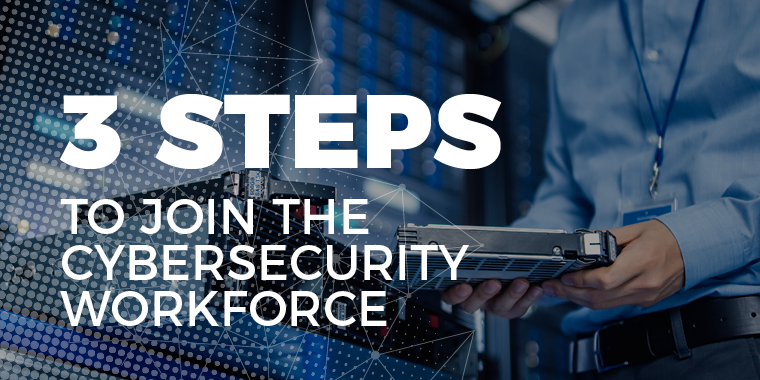You’ve been thinking about the estimated 3.5 million unfilled cybersecurity jobs that are projected to be available, but unfilled by 2021, haven’t you? You realize that a career in cybersecurity is a good idea, but you’re not sure where to start? Here are some next steps to get you started on the path to your future.
Step 1: Accumulate Knowledge
There is no way around this first step; you need to gather knowledge about the field you wish to enter. A baseline of knowledge includes becoming familiar with the cybersecurity lexicon. Broadly, there are two categories of cyber professionals you can join to help an organization improve its security: Red or Blue Teams.
Red Teams are offensive, meaning they emulate and attack to help identify and fix vulnerabilities. Red Team roles include penetration testers and attack operators. Blue Team members have a defensive-focus and include malware analysts, incident responders, and computer forensics positions.
Not sure which cybersecurity role fits your personality? Take our Cyber Roles quiz to find your match.
Step 2: Prove your Knowledge
Even if you have a cyber-related college degree, you’ll still need to prove your cyber chops to a future employer. If you don’t have a cyber degree, same story. What is the best way to do that without work experience? Cybersecurity certifications. CompTIA’s suite of entry-level certifications is a great place to start. Specifically, the Security+ certification covers fundamental principles for network security and risk management. With this credential, you’ll show potential employers that you can secure a network and discourage hackers.
The Security+ certification acts as a foot in the door that ensures you can speak the language of cybersecurity.
Step 3: Continuously Update Your Knowledge
Your learning and studying should not stop after you have earned your Security+ certification. Learning can take the form of formal studying, such as earning other certifications.
For example, if you are looking to be on a Red Team then, earning your Certified Ethical Hacker (CEH) certification is a good place to start. If you liked the risk management components of the Security+ exam, add the Certified Informations Systems Security Professional (CISSP) certification to your resume.
The CISSP is a credential that dives deeper into similar content as Security+ and proves both technical and managerial competence. This cert requires five (5) years work experience, but you can sit for the exam and earn your Associate of (ISC)² while you are gaining your experience. The Associate of (ISC)² is one more way to show employers that you’re serious about your career and knowledgeable in security and management.
Learning can happen in more social settings or via free virtual events such as Meetups, joining organizations, and networking with experienced industry practitioners. These sessions are not only helpful to gain knowledge and skills, but also create opportunities that can potentially lead to landing a job.
This learning style has a key requirement: You must be willing to put yourself out there and actively participate with other attendees. The best security practitioners know they need to actively communicate and collaborate with their team members and clients to ensure effective project management and minimize any preventable barriers.
Let us Help with Steps 2-3
While joining events must happen in-person, studying can happen at home. CyberVista offers live online or on-demand certification training and resources so you can study in the comfort of your living room while you get ready to launch or advance your cyber career.

